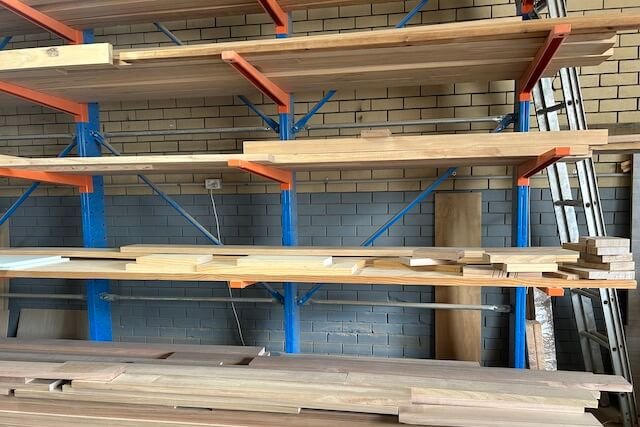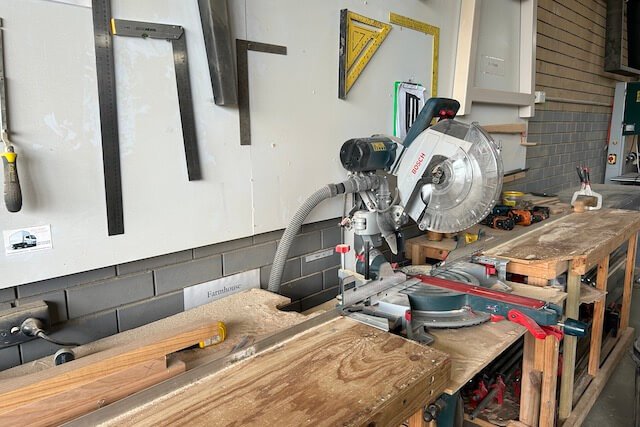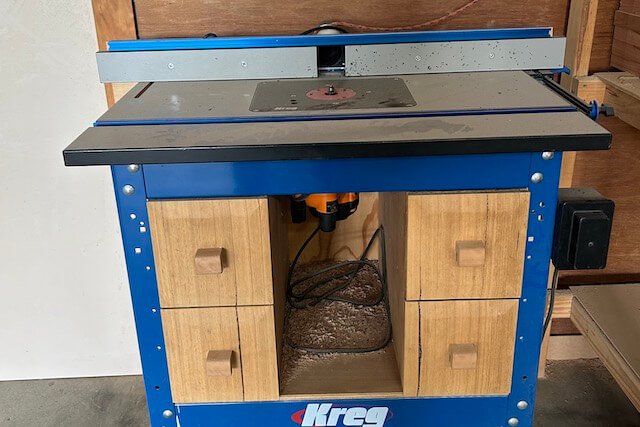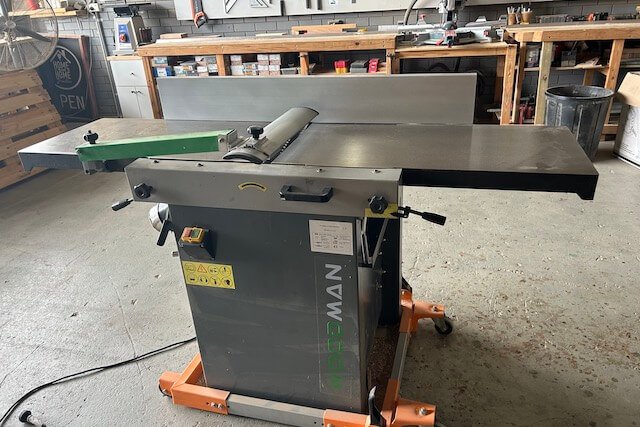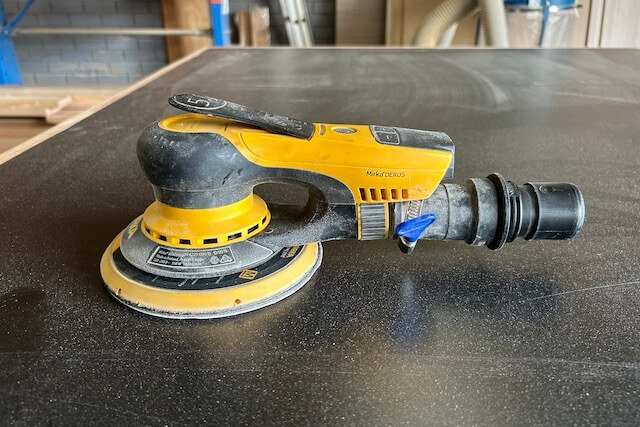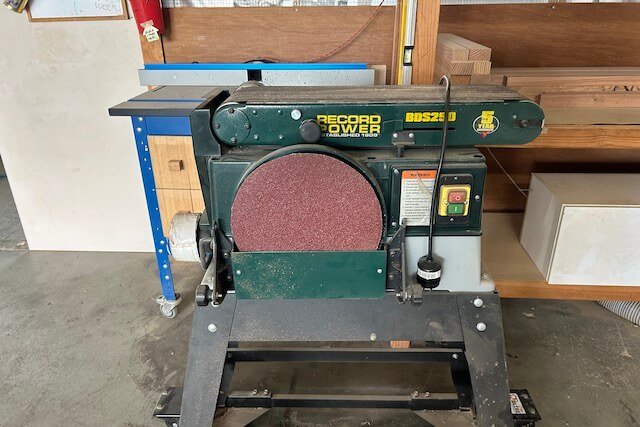Tools for crafting timber furniture
A look inside our workshop
Step into any furniture maker’s workshop, and you’ll find a world of tools as varied and essential as the pieces they create. In our workshop, each tool serves a distinct purpose, from traditional hand tools that shape intricate details to modern power tools that bring efficiency and precision. Together, they form the backbone of our craft, transforming raw timber into stunning, functional furniture.
The advantage of using a carefully curated collection of tools is clear. Hand planes smooth the roughest boards, chisels carve elegant details, and routers craft clean grooves that elevate the design. These tools work in harmony to ensure every piece meets the highest standards of craftsmanship, resulting in furniture that blends timeless beauty with quality construction.
From sturdy dining tables to custom shelving, each item we create carries the precision and passion of skilled hands, guided by the right tools. Welcome to a behind-the-scenes look at the instruments that make it all possible.
Workshop essentials
Layout
The layout of our timber workshop is crucial for both efficiency and creativity. At its core, the space balances functionality with safety. Workbenches take centre stage, offering a sturdy surface for detailed craftsmanship. Power tools, like saws and sanders, are strategically placed near dust extraction systems to keep the workspace clean. Timber is neatly stacked, and our tools are organised for easy access. This thoughtful arrangement ensures that each step of the process flows smoothly, from raw timber to finished masterpiece.
Safety first
Safety is paramount in furniture making. A pair of sturdy safety goggles shields the eyes from flying wood chips, while a dust mask or respirator protects from inhaling harmful particles. Hearing protection guards against the noise of power tools, and gloves provide grip and protect hands from sharp edges. A thick apron adds an extra layer of defense, ensuring a secure and confident work environment.
Keeping it clean
A clean workspace is essential for both safety and efficiency. Wood shavings, sawdust, and offcuts can clutter the workshop, posing risks of accidents. Regularly sweeping floors and clearing workbenches maintains order, helping to keep tools easily accessible. Proper disposal bins for scraps and a vacuum system for sawdust ensure the air remains clear and breathable. A tidy workshop not only fosters creativity but also reduces distractions, enabling us to focus on crafting high-quality pieces.
Traditional hand tools
Traditional hand tools remain central to the art of crafting timber furniture. Chisels are indispensable for carving intricate details, whether it’s refining a mortise or adding delicate accents. Paired with mallets, they allow woodworkers to apply controlled force, shaping the timber with accuracy.
Hand planes are another cornerstone of woodworking. These tools create smooth, level surfaces, transforming rough timber into sleek, polished pieces. The sound of a hand plane gliding across the wood is a hallmark of craftsmanship, leaving surfaces that are both functional and beautiful.
Saws, too, are vital. From dovetail saws for fine cuts to coping saws for curves, these tools enable precise joinery. Hand-cut joints not only strengthen the furniture but also showcase the maker’s attention to detail and skill. These traditional tools ensure that each piece is made with care, resulting in furniture that will last for generations.
Clamps, measuring, and marking tools
Precision, stability, and attention to detail are essential for exceptional timber furniture, and clamps, measuring, and marking tools play a crucial role in achieving these standards. Tape measures and rulers provide the accuracy needed for every cut, ensuring that pieces are the correct length. Squares and bevels guarantee perfect angles, making sure everything aligns properly.
Marking knives and gauges allow for crisp, clean lines that guide cuts and joints. These tools prevent errors before the blade even touches the wood, ensuring a seamless fit during construction.
Stability is just as important as precision, which is where clamps come in. Bar clamps hold large pieces of timber steady during gluing or assembly, while bench vices act as a “third hand,” offering support for finer details. Specialty clamps are used for more complex joinery, holding tight to ensure that every joint sets properly.
These tools don’t just make the job easier, they elevate the quality of the final product, ensuring that each piece of furniture is as sturdy and beautiful as it is functional.
Modern power tools
Modern power tools have revolutionised furniture making, enabling efficiency without compromising craftsmanship. Tools like the drop saw, or mitre saw, quickly cut timber to rough sizes, setting the stage for finer work. The planer or surface machine evens out timber, ensuring uniform thickness and creating the perfect foundation for any piece.
Planers and jointers work together to flatten and smooth timber, while the table saw provides precision for cutting boards to the exact width needed. Routers add decorative touches and clean grooves, while router machines specialise in shaping edges and creating intricate profiles that enhance the design.
The band saw is ideal for more detailed cuts, handling curves and irregular shapes with ease. These modern tools make the process faster and more accurate, allowing craftsmen to focus on the artistry of furniture making. They bridge the gap between traditional methods and modern innovation, ensuring that every piece is crafted to perfection.
Drop saw
Router table
Surface machine
Band saw
Joinery tools
Joinery tools are at the heart of furniture making, ensuring that each piece of wood fits together seamlessly and securely. Mortise and tenon joints have stood the test of time for their strength and reliability. The process involves creating a rectangular hole (mortise) in one piece of wood, into which a precisely cut projection (tenon) from another piece fits. This strong bond is often reinforced with glue, creating a sturdy joint.
Floating tenons offer a modern twist on traditional joinery. These small timber pieces slot into corresponding mortises, acting as a hidden bridge between two pieces of wood. Dowels are also popular for joining parts, aligning them securely without visible hardware.
Screws add another level of strength, especially when reinforced by other joinery techniques. Though more visible, screws ensure durability and are essential for furniture that experiences heavy use.
Finishing tools
Finishing tools are the final touch that transforms raw timber into polished furniture. Sanding is typically the first step in the finishing process. A belt sander smooths larger, flatter surfaces, removing rough spots and preparing the wood for finer detailing. The drum sander ensures precision, providing even thickness across boards.
The oscillating sander is ideal for delicate work, minimising the chance of uneven patches. It is perfect for soft woods, ensuring smoothness without causing damage. Once the surface is prepared, brushes and rollers are used to apply finishes like stains, oils, or varnishes evenly. Brushes are ideal for detailed areas, while rollers cover larger surfaces quickly.
These tools not only enhance the appearance of the wood but also protect it, ensuring that your furniture remains beautiful and durable for years to come.
Crafting timber furniture is an art that relies heavily on the tools used in the workshop. From traditional hand tools to modern power tools, each one plays a vital role in transforming raw materials into beautiful, functional pieces. Proper maintenance, a clean workspace, and the right safety gear all contribute to the success of the project. By using the best tools and caring for them properly, we can continue to produce pieces that are built to last.

